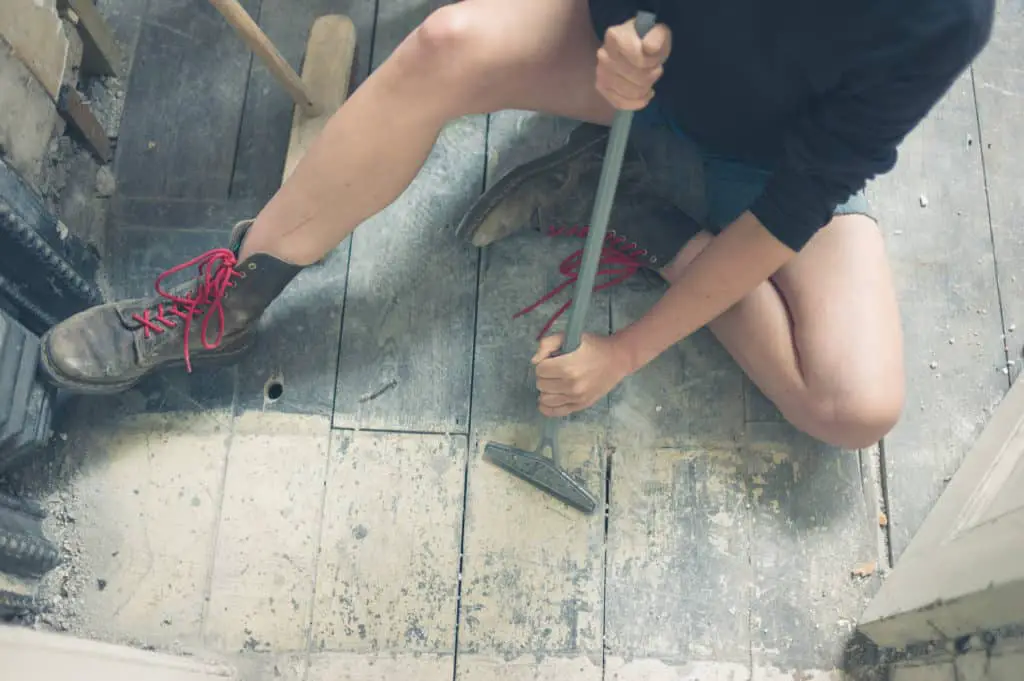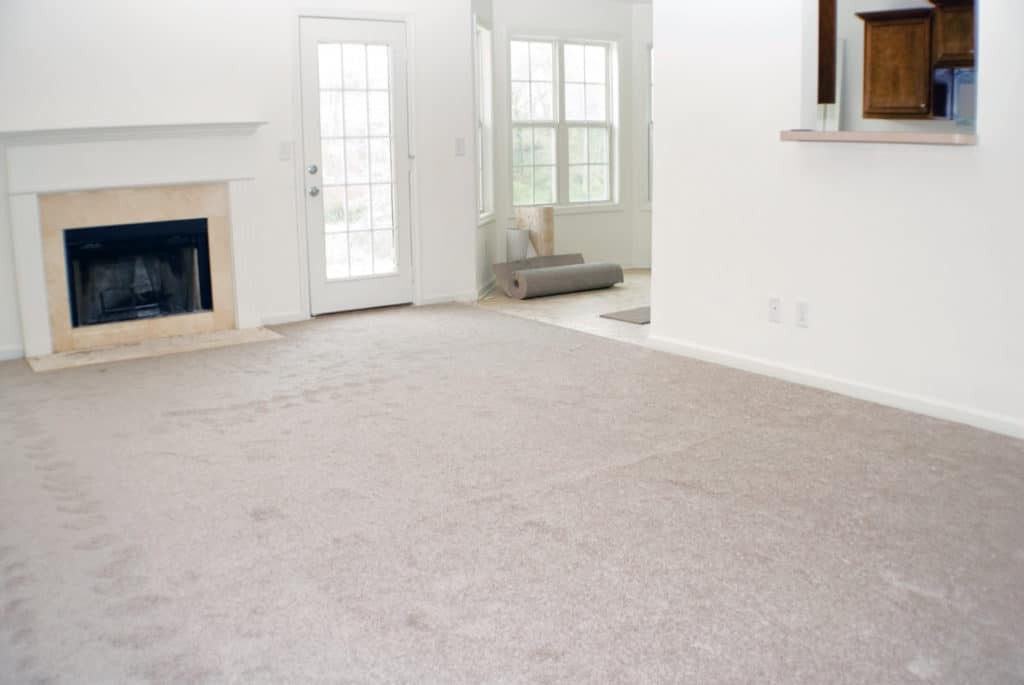I went carpet shopping with my other half yesterday and alongside discovering that carpet shopping now ranks as one of my top 10 worst ways to spend a Sunday, I was shocked by how much flooring costs.
This got me thinking. It makes sense if you have spent a large sum of money on flooring the last thing you want is some electrician like me coming along and ripping up your floorboards to carry out work.
In truth, homeowners can rest easy that many small jobs can be done without lifting floorboards (and the methods below will come in handy) but is it possible to carry out a house rewire without lifting floorboards?

Can You Rewire a House Without Lifting Floorboards?
Rewiring a house without lifting floorboards is possible, but it creates additional challenges for the electrician and often involves making compromises to the final aesthetic appearance that most homeowners are not willing to make.
I like to think most electricians are a bit of a dab hand at finding workaround solutions to problems. Throughout our careers, we become adept at fishing cables into hard to reach places, including under the floorboards.
We’ll get into the tricks we can use but it’s worth remembering that all these little tricks are not full proof. We still rely on a large element of things going our way (or a little bit of luck to put it more bluntly)
Electricians will try to not lift floorboards in general small wiring jobs as leaving carpets and floorboards in place saves a lot of time and hassle. However, there comes a point when we have to call it quits on our efforts and admit lifting the floorboards is the only way forward.
To do a complete house rewire without lifting the floorboards would be a pretty unique situation to be in. Perhaps it is not all floorboards the homeowner doesn’t want lifting, it is just some select rooms with expensive flooring? – Working around a few rooms is easier than a blanket ban on lifting all floorboards.
When lifting floorboards is not reasonably practical (for example, the expense involved in relaying the finished floor makes it prohibitive) it may be possible to gain access to the cables by coming up from the ceiling below.
Whilst this method of attack means creating holes in the ceiling below, repairing a ceiling is generally a lot cheaper than replacing expensive flooring.
There is also the option to use mini trunking, which we’ll look at later on. This is an option, but in my opinion, the finished look after the rewire isn’t all that great. In fact, I’ve not met a private homeowner yet who is willing to have a rewire done entirely in mining trunking.
How Do You Get Cables Under Floorboards?
The easiest method for electricians to get cables under the floorboards is to roll back the carpet and lift the floorboards to provide unencumbered access to all the cables and the supporting joists. When this method is not available, fishing cables under the floorboards becomes the next best option.
I’m not sure why we refer to the method as fishing cables, but it basically means getting the cables from A to B using some sort of rod or ‘draw wire”. Anyone who has had to stretch to get an extension lead behind an awkward cupboard knows that fishing cables can be extremely frustrating but also gives us a great smug factor when it works out.
Access holes are drilled (usually around 60mm diameter, just enough to get the cable in at the angle we need). The cable is then taped to a rod and pushed under the floorboards in the hope that it can be retrieved at the other access hole we have drilled further down the room.
Sometimes this method works like a charm to avoid us having to lift floorboards during a rewire. Sometimes not so much. There are multiple supporting joists and various pieces of debris hidden under the floorboards that can prevent our cables from getting through.
Can You Rewire A House Without Removing Carpets?
Carpets will normally need to be removed in order to carry out a rewire but generally, they only need lifting around the edges of the room. Although lifting carpets may sound daunting, they generally lay back down very well.

Carpets don’t present much of a problem to electricians, as we have plenty of experience lifting carpets and laying them back down when finished. Coming up against tiled or laminate floors on the other hand presents different challenges altogether.
Flooring such as tiles and laminate wood does not lift easily so lifting these types of flooring would be a last resort. If carrying out a full rewire the electrician will discuss in advance if they think sections of the tiles will need to come up.
Generally speaking, if the difficult flooring is only in a few rooms we can use the methods mentioned in the section below to get away with leaving the expensive flooring well alone.
Alternatives To Lifting Floorboards for a Rewire
Although it is common practice to do so, there are some alternatives to lifting floorboards during a rewire. Be warned though that these methods can be more difficult or create more mess than the lifting of floorboards we are trying to avoid.
- Attcaking the problem from below is a good alternative. If we cannot get to the cables by going under the floorboards we may be able to get them by going up from the ceiling. Cutting holes in the plasterboard ceiling can be dusty work that requires redecorating afterwards but is especially useful if the flooring above is to expensive to remove.
- Sometimes we can use the old cables to guide the new ones into place. This is especialy useful if there is old conduit hidden in the wall that we can reuse, allowing use to rewire without removing the plaster.
- Use of mini trunking and surfcae mounted systems are an option. I discuss them in more detail in this article, but as a summary these methods are great at reducing mess and redecoration work but having plastic trunking all aorund the walls of your house isnt all that pleasing to the eye.
Final Thoughts
Rewiring a house without lifting floorboards is technically possible but it will be hard going for the electricians involved with no guarantee of success. Tough decisions will need to be made regarding the finished look or short term disruption.
The best advice I can give is to get some local electricians around to have a look at the job in person. You may be surprised what little tricks are available to wire without lifting floorboards, or you may find they are able to put your mind at ease about how little mess will be caused by lifting the carpets and boards.
